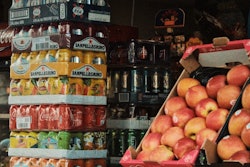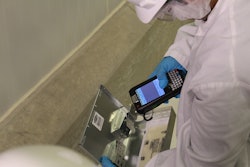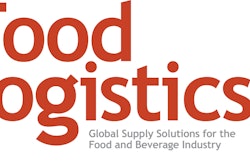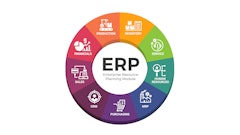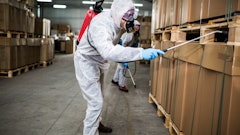
Food. You can’t live without it, but tainted food can kill you. Food service and restaurant companies provide an incredible service, fueling and entertaining millions of customers every day. Yet, one misstep in the food supply chain can have costly, even deadly, consequences, impacting profits, brand reputations and lives.
The CDC estimates 48 million people fall sick, 128,000 are hospitalized and 3,000 die annually in the United States due to foodborne illness. The financial costs are staggering, at $93.2 billion annually according to sources. In fact, a 2018 study estimates that a single outbreak can cost up to $1.9 to $2.6 million per incident across fast-food, fast-casual, casual-dining and fine-dining restaurants. According to FDA commissioner Frank Yiannas, “Today’s food system is amazing, but it does have one major Achilles heel: A lack of traceability and transparency.”
To address this lack of visibility, the food services industry began instituting chain-of-custody solutions to identify the path a product takes from the first stage in the supply chain right down to the restaurant. The cost of not adopting systems for tracking chain of custody is easy to see: for example, the E. coli O157:H7 outbreak in 2018, which was tied to the consumption of romaine lettuce, and the 66 percent increase in meat and poultry recalls from 2013 to 2018 as reported by U.S. Public Interest Research Group (PIRG).
The inability to proactively resolve problems as they arise has caused a lack of trust across U.S. consumers that is hard to rebuild, according to the FDA’s October 21st meeting “A New Era of Smarter Food Safety.” For example, the romaine lettuce outbreak resulted in 2018 sales plummeting by more than $136 billion versus 2017, and the implications are still being felt this year.
When a crisis hits, companies must react quickly to determine the source of the outbreak and pull affected product from the supply chain. Without full visibility and traceability, companies are forced to pull all their product in the category, even though only a small fraction may be affected. This leads to massive amounts of waste. In 2018, significant amounts of food were discarded due to recalls, including all available romaine lettuce, 12.1 million pounds of beef, and 206 million eggs due to salmonella and other concerns.
In each case, the U.S. food system was forced to take reactive actions rather than being proactive, because they didn’t have the proper traceability and transparency capabilities in place across the supply chain. This is because many stakeholders still manage their supply chains and inventory using outdated spreadsheets and manual paper-based processes.
Multi-party Networks: The Missing Link to Traceability and Transparency
Today, each organization in the food supply chain is responsible for tracing just one supply chain link: one upstream and one downstream. With most of these companies working independently to trace their piece of the supply chain on paper, emails or through spreadsheets, the process is often slow with little to no visibility being shared outside their four walls. Yet, in order to run an efficient and transparent supply chain, stakeholders need to share accurate, real-time information with all participants.
This requires each party in the supply chain, including the business customer, stores, distribution centers, processing facilities, importers/exporters, transportation companies, packing houses and farms, to share data on a single network platform. By having a network designed for multi-party, many-to-many processes, and enabling the sharing of data in a single instance with the ability to view and modify it based on permissions, every stakeholder can see the piece of information important to them as it is updated in real time. This also enables each person to collaborate with multiple stakeholders on a single problem. Lastly, network participants have the capability to enable fully autonomous processes at each step in the supply chain.
Sharing real-time data is imperative to driving the adoption of, and getting value from, new technologies such as Internet of Things (IoT) and artificial intelligence (AI), and creating a safer more transparent food system. For example, these autonomous processes allow a single person to do the work of what once took 60. This capability is enabled by an exception-based system, which uses AI to monitor and resolve problems, and only passes on to a human what it cannot fix autonomously. This relieves the burden on supply chain managers so they can prioritize and address only those problems which will have the most impact on the supply chain.
Looking beyond the food supply chain, other industries have seen huge success from adopting network platforms in conjunction with new technologies like sensors, IoT and AI. For example, ridesharing services like Uber, e-commerce marketplaces like Amazon, and hotel services such as Airbnb, all have seen exponential growth with these types of technologies. Companies in the food supply chain are following suit and seeking to adopt these multi-party solutions into their supply chains to ensure end-to-end chain of custody.
Chain of Custody: Creating Visibility from Farm to Fork
For chain-of-custody solutions in the food system to work, the capability must support the realities of today’s supply chains where end-to-end serialization—from raw materials to consumers and beyond—is often difficult to achieve. The best approach is to start with the links that can be controlled and implement serialization and chain of custody there. Once established, transparency and traceability can be implemented link by link, gradually increasing the lengths of chain-of-custody segments until the sections merge to form a full, secure end-to-end chain.
While it can be difficult to implement a full chain-of-custody solution, it is possible as long as the solution supports the many scenarios found in the food supply chain, including serial tracking, lot tracking, hybrid tracking, lot splitting, tracking through consolidation and deconsolidation, tracking through blending and discrete mixing, hierarchical IoT operations, and partial chains of custody. More importantly, full chain-of-custody systems enable the management of a full recall, and allow you to target just the affected product, so you can minimize waste and reduce customer concerns and impact. With a fine-grained, state-based, and distinct permission-based framework, the chain-of-custody solution can ensure confidentiality for owners, possessors, recallers, QA, customs and other parties that need to be involved in the recall.
Foodborne illnesses are expensive, with an annual cost of over $90 billion according to sources. For a single restaurant the costs can exceed $1 to $2 million dollars or more, a crushing blow for the owner and even the brand stakeholders, regardless of whether you’re the supplier or the chef. From a well-known burrito restaurant to a fast-food taco chain, and every restaurant across the U.S. that had to throw out (mostly) perfectly good romaine lettuce, the examples are everywhere. Multi-party networks make recalls more palatable by enabling everyone in the supply chain network to share relevant information in real time and avoid the devastating effects they can have on their customers, brand and the economy.





